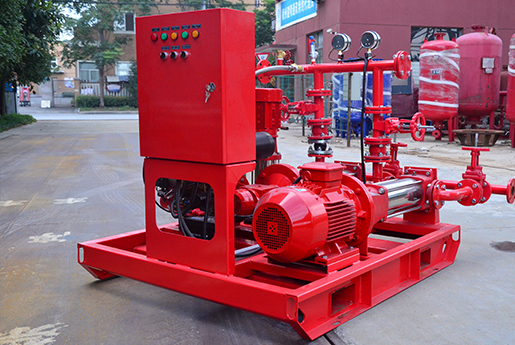-
 Nov 15, 2024What Are the Safety Benefits of Electric Fire Pumps?Electric fire pumps offer several safety benefits that make them a preferred choice in many fire protection systems. Here’s a breakdown of their key safety advantages:
Nov 15, 2024What Are the Safety Benefits of Electric Fire Pumps?Electric fire pumps offer several safety benefits that make them a preferred choice in many fire protection systems. Here’s a breakdown of their key safety advantages:
View details -
 Nov 15, 2024Do Fire Pumps Require Pre-Startup Inspections?Yes, fire pumps do require pre-startup inspections to ensure they are ready to operate effectively in case of an emergency. These inspections help identify and address any potential issues before the pump is commissioned, ensuring compliance with NFPA standards and safeguarding building safety. Here are some key areas typically covered in a pre-startup inspection:
Nov 15, 2024Do Fire Pumps Require Pre-Startup Inspections?Yes, fire pumps do require pre-startup inspections to ensure they are ready to operate effectively in case of an emergency. These inspections help identify and address any potential issues before the pump is commissioned, ensuring compliance with NFPA standards and safeguarding building safety. Here are some key areas typically covered in a pre-startup inspection:
View details -
 Nov 15, 2024Why is Scheduled Maintenance Important for Diesel Fire Pumps?Scheduled maintenance is critical for diesel fire pumps due to their essential role in fire protection systems. Here are some key reasons why regular maintenance is important:
Nov 15, 2024Why is Scheduled Maintenance Important for Diesel Fire Pumps?Scheduled maintenance is critical for diesel fire pumps due to their essential role in fire protection systems. Here are some key reasons why regular maintenance is important:
View details -
 Nov 15, 2024Why Is Fire Pump Flow Rate Calibration Necessary?Calibrating the flow rate of a fire pump is essential to ensure that the pump performs accurately and reliably during emergencies. Here are some key reasons why fire pump flow rate calibration is necessary:
Nov 15, 2024Why Is Fire Pump Flow Rate Calibration Necessary?Calibrating the flow rate of a fire pump is essential to ensure that the pump performs accurately and reliably during emergencies. Here are some key reasons why fire pump flow rate calibration is necessary:
View details -
 Nov 13, 2024What Are the Main Causes of Fire Pump Damage?Fire pump damage can result from a variety of factors, often stemming from improper use, maintenance issues, or external conditions. Here are some of the main causes:
Nov 13, 2024What Are the Main Causes of Fire Pump Damage?Fire pump damage can result from a variety of factors, often stemming from improper use, maintenance issues, or external conditions. Here are some of the main causes:
View details -
 Nov 13, 2024Can Fire Pumps Be Operated Manually in Emergencies?Yes, fire pumps can often be operated manually in emergencies, depending on the setup and configuration of the system. Many fire pump systems have a manual override to ensure operation in case of automation failures. Here’s how manual operation generally works:
Nov 13, 2024Can Fire Pumps Be Operated Manually in Emergencies?Yes, fire pumps can often be operated manually in emergencies, depending on the setup and configuration of the system. Many fire pump systems have a manual override to ensure operation in case of automation failures. Here’s how manual operation generally works:
View details






